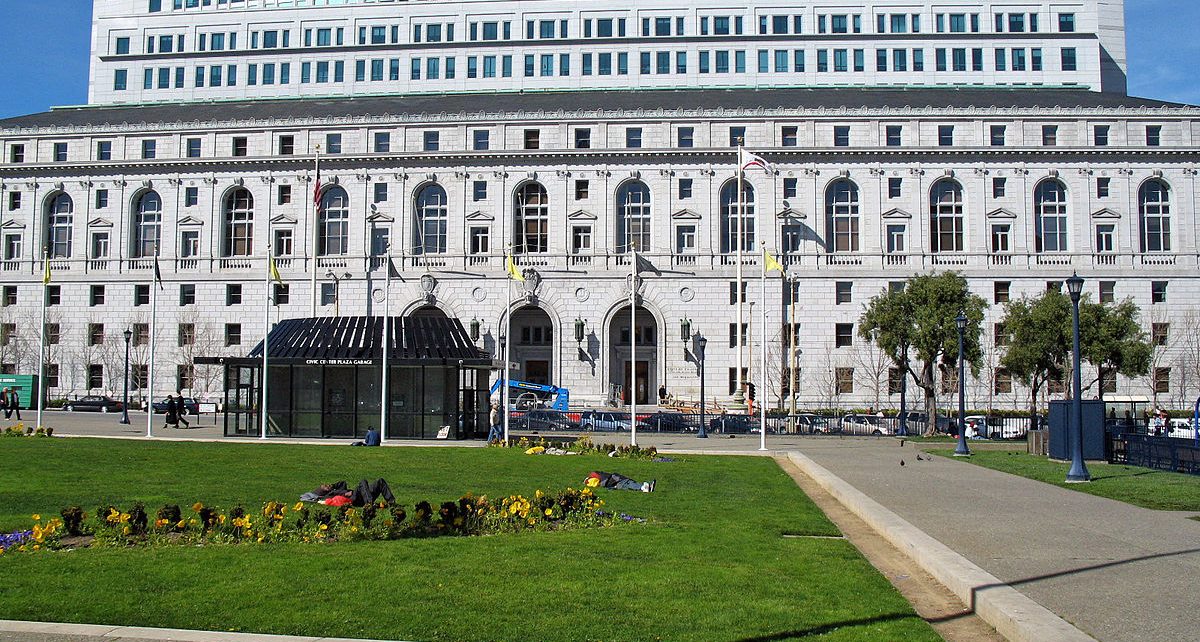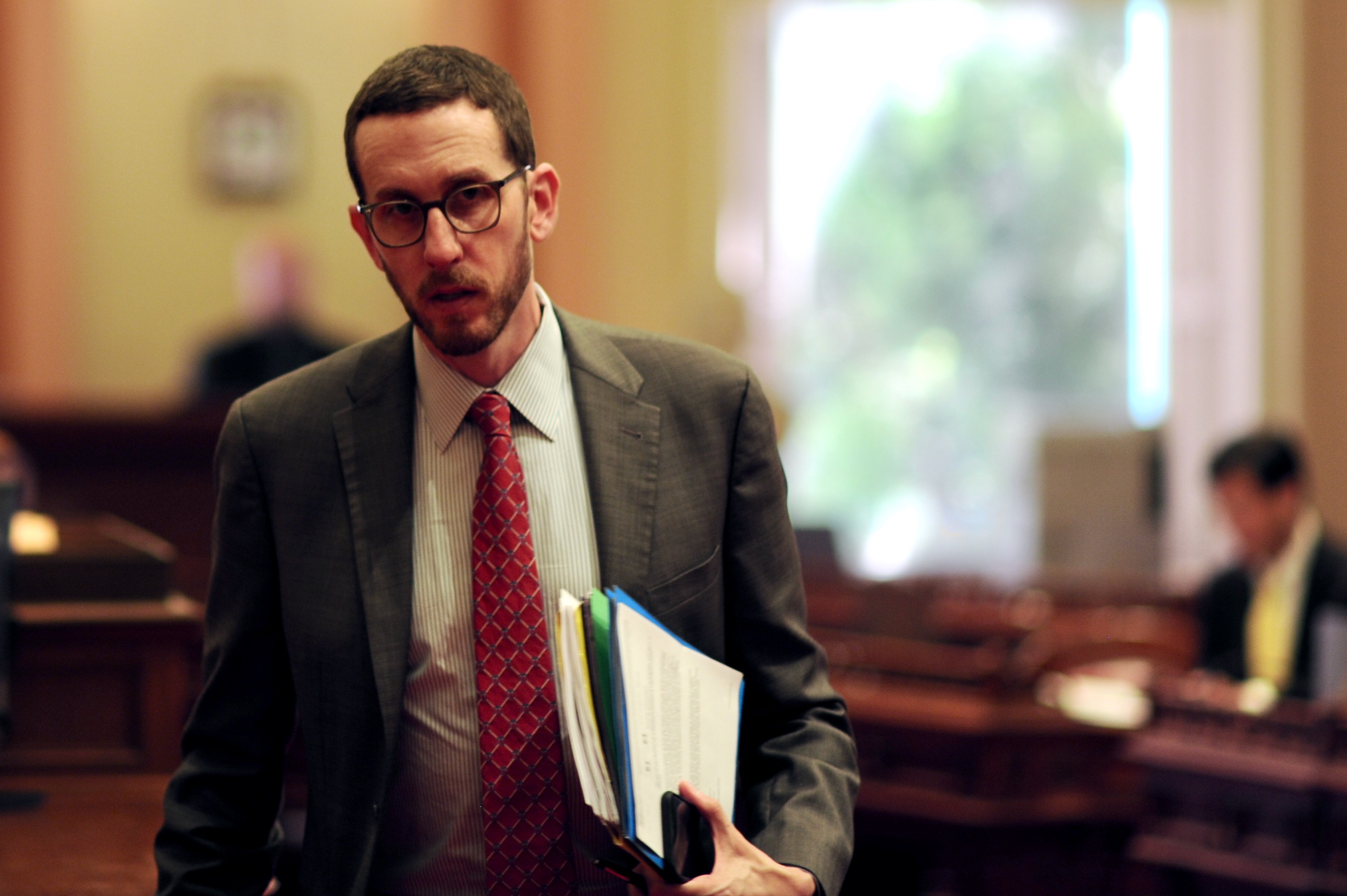
California Supreme Court (Photo: public domain)
Comparing State and Federal Judiciaries
Federal courts are established in the US Constitution; state constitutions create their state courts
By Chris Micheli, May 20, 2019 6:18 am
There are both federal and state judicial branches and separate court systems at both levels of government. The federal courts are established in Article III of the United States Constitution, while the state courts are established in Article VI of the California Constitution.
Article 3 of the federal constitution contains three sections. Section 1 vests the judicial power of the country in the Supreme Court and the “inferior courts” (or lower courts) that Congress establishes. It also specifies that there are no term limits for federal judges. Note that Section 1 establishes the chief justice, but not the size of the supreme courts or other specific positions.
Congress has used its power set forth in the U.S. Constitution to establish the 13 U.S. Courts of Appeals, the 94 U.S. District Courts, the U.S. Court of Claims, and the U.S. Court of International Trade. U.S. Bankruptcy Courts handle bankruptcy cases. Magistrate Judges handle some District Court matters.
Section 2 sets forth the powers of the federal courts. First, the judiciary must consider only actual cases or controversies, which is why the federal courts utilize issues of standing, mootness and ripeness to limit their jurisdiction. Essentially, federal court jurisdiction is limited to cases that arise from the federal constitution or laws, treaties, those involving multiple states or foreign governments, and other specified areas. The Supreme Court has original jurisdiction with ambassadors or the states are a party to a case. Juries must be used for federal criminal prosecutions.
Section 3 defines treason and specifies that Congress punishes it. There are specified requirements for cases of treason and how it can be punished.
All state constitutions create their respective state court systems. They all have a high court, and many states have an intermediate appellate court(s). All of them also have trial courts, some of which are called circuit or district courts. Most states also provide for courts that handle specified legal matters, such as probate and family courts.
Article 6 of the state constitution contains 23 sections (although numbers through 22). Section 1 vests the judicial power of the state in the Supreme Court, courts of appeal, and superior courts. Section 2 specifies that there are 7 Supreme Court justices. Section 3 requires the Legislature to divide the state into districts with each having a court of appeal.
Section 4 requires each county of the state to have a superior court of one or more judges and the Legislature prescribes the number of judges and provides for the officers and employees of each superior court. Section 6 creates the Judicial Council, which appoints an Administrative Director of the Courts.
Section 7 creates the Commission on Judicial Appointments and Section 8 creates the Commission on Judicial Performance. Section 9 creates the State Bar of California, which is a public corporation and every person admitted and licensed to practice law in California is a member of the State Bar.
Section 10 specifies that the Supreme Court, courts of appeal, superior courts, and their judges have original jurisdiction in certain proceedings. Section 11 provides that the Supreme Court has appellate jurisdiction when judgment of death has been pronounced. Section 12 deals with appellate court jurisdiction.
Section 15 makes a person eligible to be a judge of a court of record with at least 10 years immediately preceding selection that person has been a member of the State Bar or served as a judge of a court of record in this State. Section 16 specifies that judges of the Supreme Court are to be elected at large and judges of courts of appeal must be elected in their districts at general elections at the same time and places as the Governor. Section 16 also limits terms to 12 years and specifies how justices are selected.
Section 17 prohibits a judge of a court of record from practicing law and, during the term for which the judge was selected, is ineligible for public employment or public office other than judicial employment or judicial office. Section 18 requires disqualification of a judge when certain proceedings are pending.
Section 18.1 requires the Commission on Judicial Performance to exercise discretionary jurisdiction with regard to the oversight and discipline of subordinate judicial officers. Section 19 requires the Legislature to prescribe compensation for judges of courts of record. Section 20 specifies that the Legislature must provide for the retirement of judges of courts of record for age or disability. Section 22 allows the Legislature to provide for the appointment by trial courts of record of officers, such as commissioners, to perform subordinate judicial duties.
When it comes to the selection of judges, the U.S. Constitution states that federal judges are to be nominated by the President and confirmed by the Senate. And they hold office typically for life. Through Congressional impeachment proceedings, federal judges may be removed from office for misbehavior.
On the other hand, State court judges are selected in several different ways, such as election, appointment by the Governor, and specified terms or life terms. In California, trial court judges are elected generally, but the Governor may appoint judges to fill vacancies. For appellate court justices, the Governor appoints them and they are confirmed by the Commission on Judicial Nominations.
Finally, regarding court jurisdictions, the federal courts are assigned cases that deal with the constitutionality of a law; cases involving the laws and treaties of the U.S.; cases involving ambassadors and public ministers; disputes between two or more states; and, cases involving admiralty law and bankruptcy law.
State courts, on the other hand, handle most criminal cases, probate, contracts, tort, and family law matters. They also decide on cases involving their respective state constitutions, statutes, and regulations.
- How Many Bills Are on the Inactive Files? - January 1, 2026
- Actions Against Usurping Public Office - January 1, 2026
- Voiding or Rescinding a Declaration of Minor Emancipation - January 1, 2026




